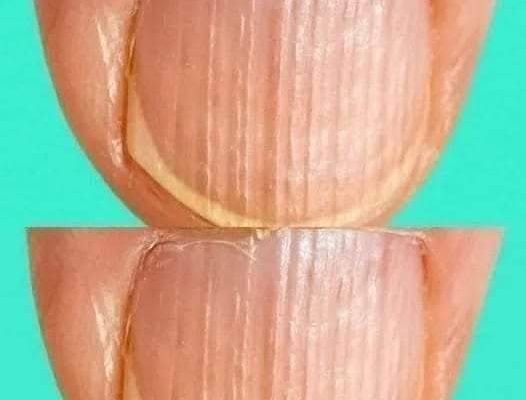Manicures can hide imperfections on your nails, but shiny polish won’t cover up potential health issues that could be hiding within your body. Your nails serve as a reflection of your overall health, and any abnormalities may signal underlying problems with your liver, lungs, or heart. Nail health often mirrors what’s happening inside your body, and when changes occur, it can indicate health conditions or simply reflect the natural aging process. Stripes on your nails might be harmless, but according to the National Library of Medicine (NCBI), ridges on nails can also offer clues about more serious health conditions, suggesting underlying problems.
In this article, we’ll explore the different types of stripes on your nails, what they could mean, and when it’s important to seek medical advice.
Types of Nail Stripes
Vertical Stripes
Vertical ridges, or longitudinal striations, are common and typically run from the cuticle to the tip of the nail. They are often associated with aging, as nails may develop more prominent ridges over time. In some cases, they may reflect nutritional deficiencies, such as a lack of vitamins and minerals (like vitamin B12, magnesium, or iron).
While vertical ridges are generally harmless and common with age, if they appear suddenly or become more noticeable, it may be worth considering conditions such as anemia or thyroid problems.
Horizontal Stripes
Horizontal stripes or grooves, also known as Beau’s lines, may signal more specific health issues. These horizontal indentations can appear after physical trauma to the nail or be caused by serious illnesses such as malnutrition, uncontrolled diabetes, heart attacks, or respiratory diseases.
The appearance of these ridges is often linked to disruptions in nail growth caused by periods of stress or illness, as the body may temporarily slow or stop nail growth. The NCBI notes that if the grooves develop suddenly, it may indicate a sharp health crisis. When horizontal stripes are found on all 20 nails, it may be a sign of systemic diseases like mumps, pneumonia, coronary thrombosis, Kawasaki disease, syphilis, or hypoparathyroidism.
White Stripes
White, parallel horizontal lines that don’t indent the nail surface could be an indication of liver or kidney problems. These lines, known as Muehrcke’s lines, tend to fade temporarily when the nail is pressed and usually appear on multiple nails.
These white stripes are often associated with low blood protein levels, particularly albumin, and are commonly seen in people with malnutrition or chronic liver disease. If Muehrcke’s lines are present on several nails, it’s best to consult a healthcare professional, as it could indicate protein deficiencies or kidney/liver issues.
Poor Diet and Nail Health
For most people, minor nail imperfections like ripples are normal and can be improved with a healthy lifestyle. A balanced diet rich in protein, vitamins, and minerals such as biotin, vitamin E, iron, and zinc can enhance nail appearance over time.
Dr. Sara Norris, a naturopathic doctor in Los Angeles, told Healthline that “nail health is most often an indicator of poor nutritional intake or poor digestion.” She added, “Brittle, weak, and peeling nails are the most common issues I see in my practice, and these symptoms are more often the result of a poor diet than systemic disease.”
Your nails provide valuable insights into your overall health. While some changes are harmless and simply part of the aging process, others may signal potential health concerns. Many causes are treatable, but it’s important to pay attention to what your nails are telling you about your health.



